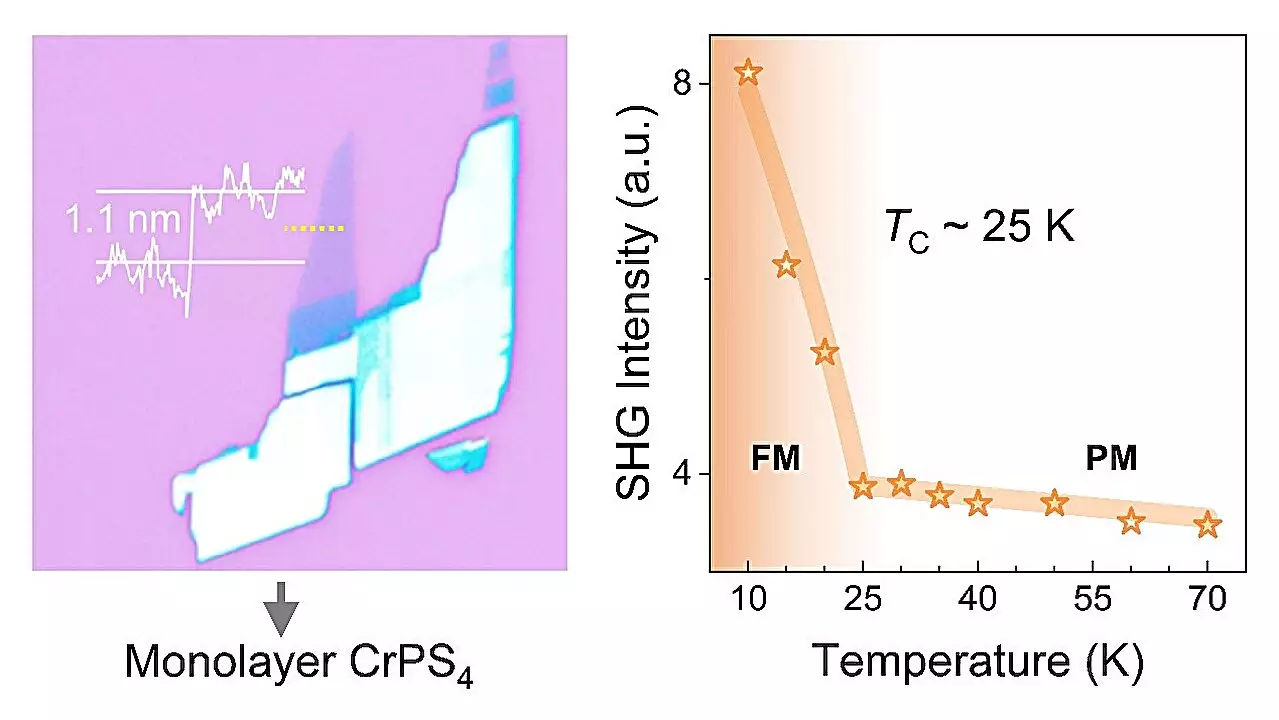A recent study led by Professor Sheng Zhigao at the Hefei Institutes of Physical Science of the Chinese Academy of Sciences has uncovered a significant breakthrough in the field of nonlinear optical effects in materials. The research team’s findings, published in Advanced Optical Materials, shed light on the strong nonlinear magnetic second harmonic generation (MSHG) induced by ferromagnetic order in monolayer CrPS4.
Background
Second harmonic generation (SHG) is a well-known nonlinear optical effect that is sensitive to symmetry breaking in materials. Traditionally, SHG has been observed in crystals with broken symmetry (i type) and to a lesser extent in magnetic systems (c type). However, the weak nature of SHG in magnetic systems has limited its potential applications in optical devices. With the rise of two-dimensional van der Waals materials, researchers have begun exploring their unique properties, including their nonlinear optical behavior.
In their study, Professor Sheng’s team focused on investigating the magnetic order-related SHG effects in the two-dimensional antiferromagnetic material CrPS4. Surprisingly, they found that the antiferromagnetic order in bulk and even-layered CrPS4 did not exhibit any c type SHG effects. However, in odd-layered CrPS4, a significant c type SHG effect induced by monolayer ferromagnetic order was observed. This observation marked the first time that ferromagnetic order-induced c type SHG effects were detected in a 2D magnet under the electric-dipole approximation.
Significance of the Findings
One of the most remarkable discoveries of the research team was that the signal strength of the ferromagnetic order induced c type SHG was comparable to that of i type SHG, which arises from the breaking of crystal structural symmetry. This finding is particularly rare among known magnetic materials and opens up new possibilities for utilizing magnetic two-dimensional materials in optoelectronics applications.
The observation of strong nonlinear magnetic second harmonic generation in monolayer CrPS4 represents a significant advancement in the field of nonlinear optics. The research findings not only expand our understanding of the link between magnetic order and nonlinear optical properties but also pave the way for the development of novel optoelectronic devices utilizing 2D magnetic materials. As researchers continue to explore the unique properties of 2D materials, further breakthroughs in nonlinear optics are expected to emerge, driving innovation in the field of photonics and beyond.


Leave a Reply